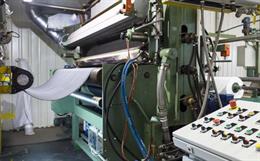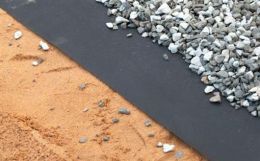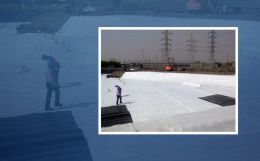Ingeotechnical engineering applications, the method of joining of geotextiles byappropriate seam is one of the most important issues to deal with.
Inorder to optimize the rehabilitation costs and to increase the life of thegeotextiles structure throughout the lay in the field, this study has been doneon the geotextiles. Polypropylene nonwoven needle punched fabric and the threadmaterial as same as the ground material i.e., polypropylene sewing thread oftwo different thread count (90 tex and 160 tex) and five stitches per inch 6-14in steps of 2 are used as test variables with 401 two thread lock stitch whichis used in factory seaming of geotextiles.
Theexperimental analysis was carried out to evaluate the performance of eachsample with different test variables in order to find its permittivity,transmissivity, apparent opening size (AOS), interface friction (shear), sewnseam strength etc.,
Acomparison has been made between the unseamed geotextiles with the seamedgeotextiles with different test variables in all the test methods. From theresults of the above tests, the stitch combination of 6 SPI (Stitch per minute)90 Tex provides the better in-plane and cross plane permeability AOS, bettershear behavior although it has lesser grab tensile and seam strength than theother test combinations. To read more,
The author of this articleMr. S. Karthiga is an M. Tech Scholar, Department of Textile Technology,Anna University, Chennai, India.


 News
News Articles
Articles Interviews
Interviews Events
Events Advertise with us
Advertise with us About Us
About Us Contact Us
Contact Us Privacy Policy
Privacy Policy Terms & Conditions
Terms & Conditions Cookie Policy
Cookie Policy









